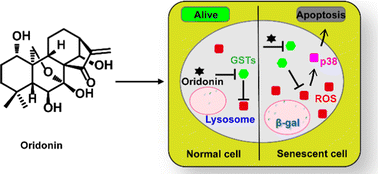Oridonin acts as a novel senolytic by targeting glutathione S-transferases to activate the ROS-p38 signaling axis in senescent cells†
Abstract
Most of the known senolytics are anti-cancer drugs or their derivative molecules. However, senolytics derived from the active ingredients of traditional Chinese medicine (TCM) are rarely reported. Here, we identified oridonin as a novel senolytic and further revealed that it might target a class of glutathione S-transferases to activate ROS-p38 signaling and induce apoptosis in senescent cells.



 Please wait while we load your content...
Please wait while we load your content...